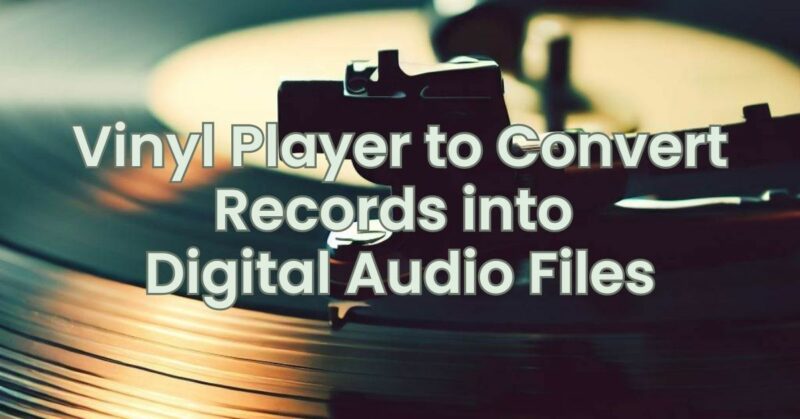Vinyl records offer a unique listening experience, but their analog nature can sometimes pose challenges when it comes to portability and convenience. Many music enthusiasts wonder if they can use a vinyl player to convert their cherished records into digital audio files, allowing for easy playback on digital devices. In this article, we will explore the feasibility of using a vinyl player for record digitization and discuss the process involved in converting vinyl records into digital formats.
Understanding the Basics: Before delving into the conversion process, it’s important to understand the primary components involved
- Vinyl Player (Turntable): A vinyl player, also known as a turntable, is a device used to play vinyl records. It consists of a platter, tonearm, stylus (needle), and cartridge, all working together to extract the audio information from the record grooves.
- Phono Preamplifier: Most vinyl players require a phono preamplifier (phono stage) to amplify and equalize the low-level audio signal produced by the turntable. This preamp prepares the signal for connection to an amplifier or audio interface.
- Audio Interface or Digital Recorder: To convert analog audio into digital format, you will need an audio interface or a digital recorder. These devices convert the analog audio signal into a digital format that can be saved as a file on your computer.
The Conversion Process: To convert vinyl records into digital audio files, follow these general steps
- Set up the Vinyl Player: Ensure your turntable is properly set up and calibrated. Check the tracking force, anti-skate settings, and tonearm alignment for optimal playback performance. Make sure your cartridge and stylus are in good condition.
- Connect the Vinyl Player to an Audio Interface or Digital Recorder: Using RCA cables, connect the audio output from your turntable (via the phono preamp) to the audio input of the audio interface or digital recorder. Follow the manufacturer’s instructions for proper connection.
- Configure Audio Settings: Set the audio interface or digital recorder to the desired recording settings. This may include selecting the sample rate, bit depth, and file format (such as WAV or FLAC) for the digital recording. Higher sample rates and bit depths generally result in better audio quality but also larger file sizes.
- Start Recording: Start the recording on your audio interface or digital recorder and carefully place the stylus on the vinyl record to begin playback. Monitor the recording levels to avoid distortion or clipping.
- Monitor and Edit the Recording: Once the recording is complete, you can listen to the captured audio to ensure it meets your expectations. Use audio editing software to trim any unwanted sections, apply noise reduction or equalization if desired, and save the recording as a digital audio file.
Considerations and Limitations: While it is possible to convert vinyl records into digital audio files using a vinyl player, there are some considerations and limitations to keep in mind
- Sound Quality: The sound quality of the digitized audio will depend on the quality of your turntable, cartridge, stylus, phono preamp, and the recording equipment used. High-quality components and proper setup will result in better fidelity.
- Noise and Imperfections: Vinyl records may have inherent imperfections such as pops, clicks, and surface noise. These will be captured in the digital recording. You can use audio editing software to minimize these imperfections during post-processing.
- Time and Effort: Converting vinyl records into digital audio files is a time-consuming process. Each record must be individually played and recorded, requiring patience and dedication, especially if you have a large record collection.
- Copyright and Ownership: It’s important to note that digitizing copyrighted vinyl records for personal use is generally allowed. However, sharing or distributing copyrighted material without permission infringes on copyright laws.
Using a vinyl player to convert records into digital audio files is indeed possible, allowing you to preserve and enjoy your vinyl collection on digital devices. By following the steps outlined in this article and paying attention to the considerations and limitations, you can embark on the journey of digitizing your vinyl records and expanding your listening options. Remember to respect copyright laws and savor the analog charm of vinyl while embracing the convenience of digital audio.


